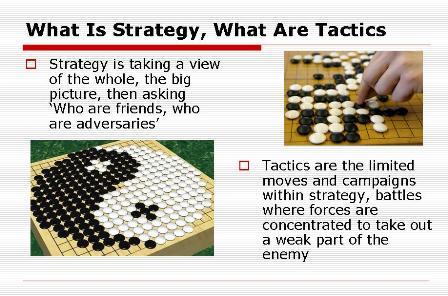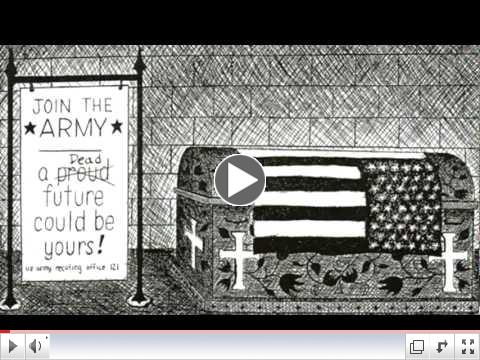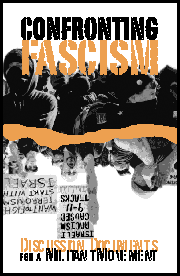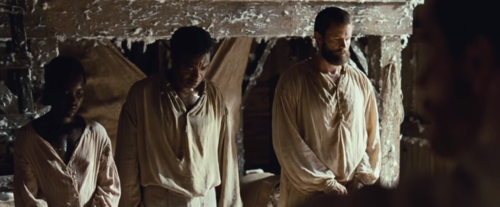 | |
The best explanation
by Jon Stewart about
Israel & Palestine
|
|
 The new annual edition of our journal of discussion and analysis is now out. More than 170 pages, it includes 14 articles on strategy austerity, organizing, and the right. Cost is $10 plus shipping. Or get one by becoming a sustainer. Click the title to buy it directly. The new annual edition of our journal of discussion and analysis is now out. More than 170 pages, it includes 14 articles on strategy austerity, organizing, and the right. Cost is $10 plus shipping. Or get one by becoming a sustainer. Click the title to buy it directly.
|

New CCDS Book Reporting on Vietnam
|
|
Radical Jesus:
A Graphic History of Faith  By Paul BuhleHerald Press By Paul BuhleHerald Press
|

Want to Know what CCDS has
been doing...Check it Out!
|
 Keep On Keepin' On Keep On Keepin' OnHating the 'Middle Class,' Why Socialists Run in Elections, Strategy and Tactics Slide Slow, Class and Privilege, the Green New Deal ...and other Short Posts on Tumblr by Carl Davidson
|

Edited by Carl Davidson Revolutionary Youth the the New Working Class: The Praxis Papers, the Port Authority Statement, the RYM Documents and other Lost Writings of SDS
Changemaker, 273pp, $22.50
For the full contents, click the link and view 'Preview' under the cover graphic.
|
|
By Randy Shannon, CCDS

"Everyone has the right to work, to free of employment, to just and favorable conditions of work and to protection against unemployment."
- United Nations Universal Declaration of Human Rights, December 10, 1948
I. Introduction
The "Great Recession" that began in 2007 has caused the greatest percent of job losses since the Great Depression of 1929. This crisis is the end of an era of unrestrained 'neo-liberal' capitalism that became public policy during the Reagan administration. The crisis marks a new level of instability with the growth of a global financial elite that targeted US workers and our trade unions after World War II.
|
|
Order Our
Full Employment Booklets
 |
...In a new and updated 2nd Edition
Capitalism may well collapse under its own excesses, but what would one propose to replace it? Margaret Thatcher's mantra was TINA...There Is No Alternative. David Schweickart's vision of "Economic Democracy" proposes a serious alternative. Even more fundamentally, it opens the door to thinking about alternatives. His may or may not turn out to be the definitive "successor system," but he is a leader in breaking out of the box. |
 by Paul KrehbielAutumn Leaf Press, $25.64
by Paul KrehbielAutumn Leaf Press, $25.64 | | Shades of Justice Video: Bringing Down a President, Ending a War |
|
 By Giuseppe Fiori
Verso, 30 pages
|

Essays on Mondragon, Marx, Gramsci
and the Green and Solidarity Economies |
Solidarity Economy:What It's All About

Edited by Jenna Allard, Carl Davidson and Julie Matthaei
Buy it here...
|

- Foreword by Susan Brownmiller
- Preface by Ken Wachsberger
$37.50 + $6 shipping
|
|
Discussion Documents for a Militant Movement

By Don Hamerquist
|
|
|
|
An Invitation to CCDSers and Friends...
 Gaza Crisis: Gaza Crisis:
Cut Off
the Money
to Israel!
We're the Committees of Correspondence for Democracy and Socialism...Do you have friends who should see this? Pass it on...Do you have a blog of your own? Others you love to read every day? Well, this is a place where you can share access to them with the rest of your comrades. Just pick your greatest hits for the week and send them to us at carld717@gmail.com! Most of all, it's urgent that you oppose the war on Gaza, defend voter rights, plan for 2014 races now, oppose austerity, support the 'Moral Mondays' in North Carolina, the fight for the Green New Deal, a just immigration policy and the Congressional Progressive Caucus' 'Back to Work Budget'! We're doing more than ever, and have big plans. So pay your dues, make a donation and become a sustainer. Do it Now! Check the link at the bottom... |
Israel Wants 'Permanent Control' over Palestinians

Collective Punishment in Gaza By Rashid Khalidi
The New Yorker
July 29, 2014 - Three days after the Israeli Prime Minister Benjamin Netanyahu launched the current war in Gaza, he held a press conference in Tel Aviv during which he said, in Hebrew, according to the Times of Israel, "I think the Israeli people understand now what I always say: that there cannot be a situation, under any agreement, in which we relinquish security control of the territory west of the River Jordan."
It's worth listening carefully when Netanyahu speaks to the Israeli people. What is going on in Palestine today is not really about Hamas. It is not about rockets. It is not about "human shields" or terrorism or tunnels. It is about Israel's permanent control over Palestinian land and Palestinian lives. That is what Netanyahu is really saying, and that is what he now admits he has "always" talked about. It is about an unswerving, decades-long Israeli policy of denying Palestine self-determination, freedom, and sovereignty.
What Israel is doing in Gaza now is collective punishment. It is punishment for Gaza's refusal to be a docile ghetto. It is punishment for the gall of Palestinians in unifying, and of Hamas and other factions in responding to Israel's siege and its provocations with resistance, armed or otherwise, after Israel repeatedly reacted to unarmed protest with crushing force. Despite years of ceasefires and truces, the siege of Gaza has never been lifted.
As Netanyahu's own words show, however, Israel will accept nothing short of the acquiescence of Palestinians to their own subordination. It will accept only a Palestinian "state" that is stripped of all the attributes of a real state: control over security, borders, airspace, maritime limits, contiguity, and, therefore, sovereignty. The twenty-three-year charade of the "peace process" has shown that this is all Israel is offering, with the full approval of Washington. Whenever the Palestinians have resisted that pathetic fate (as any nation would), Israel has punished them for their insolence. This is not new.
Punishing Palestinians for existing has a long history. It was Israel's policy before Hamas and its rudimentary rockets were Israel's boogeyman of the moment, and before Israel turned Gaza into an open-air prison, punching bag, and weapons laboratory....(Click title for more)
|
|
IDF in Gaza
By Mustafa Barghouthi
Alternet
July 30, 2014 - It is time to clarify the real facts on the aggression the Israelis started on the Palestinians.
Unfortunately, the Israeli narrative has dominated in the global media. It's very important to uncover the Israeli narrative and bring facts to the public's attention. The world needs to differentiate between myths and truth.
The first and very important point is that it was Israel which initiated this war and not the Palestinians.
This is very different from what is presented in most of the media and it's completely wrong to accept the Israeli narrative here. Israelis claim that Israel was subjected to rocket shooting from Gaza to which Israel responded by airstrikes. This is not true. The reality is that Israel initiated airstrikes on Gaza, several times, and assassinated people in Gaza, trying to provoke a reaction until they got rockets being shot at Israel. And then, it was spun in the media as Israel defending itself.
The second point is that this war started not in Gaza but in the West Bank, when the Israeli army, without providing a single proof that Palestinians were responsible for the disappearance and subsequent death of three settlers, started a collective punishment campaign all over the West Bank.
One of the results of that campaign was the arrest of more than 1,000 Palestinians, including huge numbers of Palestinian members of Parliament, bringing the number of Palestinian parliamentarians in Israeli jails to 34. During that campaign moreover, Israel invaded more than 3,000 houses, destroyed many of them, stole money from people and destroyed furniture. Israeli forces initiated wide-ranging violence against Palestinians and started using high-velocity bullets and gun shots against peaceful demonstrators who were protesting against the kidnapping of Muhammad Abu Khdeir who was tortured and burned alive by Israeli settlers. This led to a very serious escalation all over the West Bank.
The third point is that this war in not on Hamas only, it is a war on all Palestinians. It is a war on Palestinians in Gaza, it is a war on Palestinians in the West Bank, in East Jerusalem and on the Palestinians in general.
It is very important to mention that most of the people who suffer from the Israeli aggressions are civilians. At the time of writing this article, on the 26th of July, at least 1,000 Palestinians have been killed, 90% of whom were civilians. Among them, are more than 208 children. Over 6000 people have been injured, 31% of whom were children. Whole families have been eliminated. Just this morning, 20 members from the same family, including 11 children, were killed in their sleep as the building they had found refuge in only the day before was leveled. We are talking about more than 30 families that have been scratched out of the civil record because the whole extended family was eliminated, the father, the mother, the grand-parents, the grand-children, everybody. This kind of extermination of people, this level of attack is nothing less than a massacre, a genocide that is conducted by Israel....(Click title for more)
|
By Paul Buchheit
Truthout
July 28, 2014 - Our country's wealthy white once-idealistic baby boomer generation has cheated those of you entering the working world.
A small percentage of us have taken almost all the new wealth since the recession. Our Silicon Valley CEOs have placated you with overpriced technological toys that are the result of decades of American productivity, but which have mainly profited the elite members of their industries.
Although none of us in the older generations can speak for you, we can help you research the facts. And the facts are painfully clear.
1. You Have Very Little Savings to Pay Your Massive Debts
A recent report claims that median net worth for the millennial generation (18 to 35 years old) has risen from $9,000 to $32,000 since 2007, and that their median income is $47,000.
Most other sources disagree. A report from the Russell Sage Foundation concludes that all American households have lost wealth since 2007. Other evidence shows that about 90% of us lost wealth in the past five years, while the richest - and generally older - 5% made millions. Median income, according to the Bureau of Labor Statistics, is only about $35,000 for 25- to 34-year-olds, and just $25,000 for 20- to 24-year-olds.
Debt is apparently the difference, and the unrelenting burden, for college-educated young people. Based on Pew research, college-educated student debtors have twice as much debt as income. And they have only one-seventh the net worth of college-educated adults who have no student debt obligations.
2. You're Being Cheated out of the Opportunity to Begin Your Own Households
As you were entering the working world after the recession, almost 60 percent of the new jobs were low-income ($7.69 to $13.83 per hour). The number of college grads working for minimum wage doubled in just five years.
As a result, many of you are forced to live with your parents. In just one generation, the percentage of stay-at-home young adults has risen from 11 percent to almost 24 percent. And more disturbingly, student homelessness increased by 10 percent in just one year.
3. Corporations are Hoarding Money that Could Pay for Your Jobs
Corporations more than doubled their profits and halved their taxes from 2000 to 2012.
What have they been doing with all that money? Hoarding it, mostly. David Cay Johnston estimated that in 2013 American businesses held almost $7.9 trillion of liquid assets worldwide. And here's a bigger insult: According to the Wall Street Journal, for some of our largest corporations over 75 percent of the cash owned by foreign subsidiaries is kept "at U.S. banks, held in U.S. dollars or parked in U.S. government and corporate securities."
So they're using taxpayer money to protect the assets that they're avoiding taxes on.
Corporations are also spending trillions of dollars on stock buybacks, which use potential research and development money to pump up the prices of executive stock options. Apple, one of the buyback leaders, and the nation's biggest tax avoider, defended its outsourcing, saying "We shouldn't be criticized for using Chinese workers. The U.S. has stopped producing people with the skills we need."
Meanwhile, corporations continue to cut jobs, with the computer industry among the worst offenders at the start of 2014. Microsoft just announced the deepest cuts in the firm's 39-year history. AT&T has reduced its workforce by 22 percent in the last seven years. Verizon is shutting down customer service centers. Apple has a more efficient way of undermining workers, earning $400,000 profit per employee while paying most of their store workers $12 to $14 per hour.
4. The Business Media Mocks You
With supreme condescension, the media looks down at a struggling class of young Americans and proclaims:
---The good news is that information technology provides the iPod/Facebook generation with the means to find work and create careers... --Michael Barone, the Washington Examiner
---A lot of people...can still earn a good living now by building their own branded reputations... --Thomas Friedman, the New York Times
---The ability to so take photographs makes [people] richer... --Forbes
To the out-of-touch super-rich capitalists, those of you in the newest working generation thrive on social networking, good reputations, and picture-taking. A nice lifestyle, as long as you don't have to support yourselves or your families.
---
Paul Buchheit is a writer for progressive publications, and the founder and developer of social justice and educational websites (UsAgainstGreed.org, PayUpNow.org, RappingHistory.org)....(Click title for more)
|

A Mexican immigrant living in Spartanburg without papers asks the American public for forgiveness
By Alexia Campbell
National Journal
July 30, 2014 - Erik, 29, put his younger siblings through college in Mexico with money from his job cutting hardwood flooring in Spartanburg.(courtesy photo)
July 30, 2014 National Journal recently visited Greenville and Spartanburg to explore the changes happening in upstate South Carolina. In the coming weeks, Next America will publish a series of stories about the people who are shaping this conversation.
SPARTANBURG, S.C.-At the grocery store, Erik notices how the cashiers sometimes smile at the customers ahead of him in line, but not at him. His dark skin and accented English stand out in this Southern city, where only 8 percent of the population is Hispanic. Erik is from Mexico, and he's undocumented. National Journal is withholding his last name to protect his identity.
Moments like these at the grocery store remind Erik, 29, how hard it is to live in South Carolina without papers. But he also understands why his presence upsets some people who have lived their entire lives in this manufacturing town. "I still respect them because we came and invaded their space, and maybe I bother them," says Erik, who arrived in Spartanburg in 2001. "But they need to know that I'm not here to harm this country."
The percentage of immigrants living in South Carolina has nearly doubled in the past decade to 5 percent in 2012, census figures show. And about one-quarter of the state's 222,000 immigrants are believed to be living here illegally. Erik is one of them.
People in Spartanburg are friendlier to him now than they were 10 years ago, he says, but South Carolina law remains one of the toughest on illegal immigrants. For one, Erik cannot enroll in a community college or public university. If he could, he would probably study landscape architecture. He can't get a driver's license, and had to pay someone to buy a car for him because he can't do that either.
Yet the benefits far outweigh the costs, he says. The money he's made cutting hardwood flooring in Spartanburg have helped put his three younger siblings in Mexico through college.
When Erik was 15, he dropped out of school to help his parents support his two brothers and one sister. They lived in a small house in the Mexican state of Hidalgo, which borders Mexico City. Erik wanted to make sure his siblings would finish school, so he set off with his uncle to find work in the United States.
Their first attempt to reach South Texas failed. A Border Patrol helicopter spotted them drinking water from a golf-course pond after they had walked for three days without food or water. That same day, Erik and his uncle were sent back to Mexico.
They tried again four months later. This time, relatives already in the U.S. paid a coyote $2,500 to smuggle him in through the desert. Erik, his uncle, and about six other people walked for 24 hours through the Sonoran Desert into Arizona, where a van picked them up in the middle of the night. The van stopped in Mississippi, Louisiana, and Tennessee before dropping Erik off in South Carolina....(Click title for more)
|
Immigrant America: Filling Up the Worse Jobs
 | |
Broken system unnecessarily treats family farmers and hardworking immigrants like criminals
|
|
Appalachia Tries To Make a Life After Coal

By Laura Flanders
Grist via Yes! Magazine
Benham, Ky., in the heart of Harlan County, is a quiet place with a proud sign that has been amended over time to read, "Benham, the little town that International Harvester, coal miners and their families built."
International Harvester, a farm-equipment conglomerate created by industrial speculator J.P. Morgan, bought up Benham's land and mineral rights soon after the turn of the century in order to supply Wisconsin steelworks with Appalachia's high-quality coal.
These young people are pioneering Appalachia's post-coal economyThese young people are pioneering Appalachia's post-coal economy
All at once, a trappers' and hunters' hamlet became a churning coal-camp town. International Harvester designed the streets, built the houses, attracted the workers, and ran the coal north by rail. Miners were paid good wages when there was work (especially later, when workers were unionized), but most of the workers' cash went straight back to International Harvester - which owned the two-story department store, the cinema, the hospital, the power company, and every significant business in town.
Half a century later, new machines took miners' jobs and new technology enabled customers to burn cheaper coal. IH started laying off miners and selling its properties, taking its profits with it - as it had the coal.
Between 1960 and 2012, Harlan County shrank from more than 51,000 residents to fewer than 30,000. Benham's population (now under 500) set about building a new economy.
Today, the former company store houses a mining museum where visitors can crawl about in a mock mineshaft and study detailed dioramas of life during the boom years. The old public school has transformed into a colorful Country Inn, and there's a campaign to switch the town power supply (which the town still controls) from coal to renewables....(Click title for more)
|

Pablo Iglesias. Podemos leader
By Bécquer Seguín
Jacobin
July 28, 2014 - Podemos ("We can," in Spanish) is the name of Spain's newest political party - resembling the slogan of Barack Obama's 2008 campaign. But not much else links Obama and Pablo Iglesias, the 30-something public face of the party.
After all, Podemos has put forth a radical program based on class politics. Their proposals include citizen audits of public and private debt, shortening the workweek to 35 hours, reducing the retirement age to 60, illegalizing for-profit layoffs, a universal basic income, parliamentary control over the European Central Bank, and abolishing private credit rating agencies.
But most importantly, Podemos uses a decision-making model strikingly different from the two mainstream parties. They call it the "constituent process." A number of local "circles" peppered across Spain shape the overall party structure. Made up of anyone who wants to participate, these circles introduce and debate proposals for the party to take up. Each circle has an organizational leadership that works by compulsory rotation. And each avoids a subordinate relationship to the circles in Madrid, where the party was founded and where Iglesias and other key organizers participate.
Voting and circulating proposals online makes this kind of politics possible. Everyone's on equal footing, and everyone has a chance to lead the party.
Podemos took many by surprise this past May when nearly 1.25 million Spaniards voted for them in the European Parliament elections. This nearly 8 percent vote share earned Podemos five seats, which, in addition to Iglesias, are occupied by green activist Teresa Rodríguez, unemployed server Lola Sánchez, physical chemist Pablo Echenique, and teacher Tania González.
While heavy on academics, the candidates on the Podemos ticket [2] represented more of a cross-section of the Spanish citizenry than any other party in the country. Their ages ranged from eighteen to seventy-eight, and their vocations from firefighter to librarian, but most importantly they included unemployed workers of all shades.
Spain's mainstream media didn't expect anything from any of the minority parties, let alone one that had been founded only months before the election. The success of Podemos has forced many from the center-left Partido Socialista Obrero Español (Spanish Socialist Worker's Party) and the right-wing Partido Popular (Popular Party) to attempt to explain away the phenomenon.
Pedro Arriola, an influential sociologist and principal advisor to President Mariano Rajoy, lamented [3] soon after the elections that: "All the freaks in the world ended up conspiring in Madrid."
Iberian Austerity
But the truth isn't in the demographics, it's in the economics. As Guillem Murcia explains [4] at Socialist Worker, Spain's response to the 2008 economic crisis has left the working class largely out of work. The PSOE, in power from 2004-2011, first attempted a Keynesian response to stimulate demand. But around late 2010, the party made a dramatic reversal. It acceded to the austerity measures being pushed by the Troika (IMF, European Commission, and European Central Bank), and by the time President José Luis Rodríguez Zapatero left power in 2011, they had frozen pensions, raised the retirement age from sixty-five to sixty-seven, cut public employee salaries, slashed the budget of Spain's national health service, and eliminated social services for children and the elderly....(Click title for more)
|
|
Chadwick Boseman triumphs as James Brown in Tate Taylor's sturdy but sanitized take on the Godfather of Soul.
By Scott Foundas
Variety
July 28, 2014 - Is it possible for a single movie to capture James Brown in all his multitudes, contradictions and reinventions?
Probably not, but "Get On Up" makes an admirable, fitfully successful stab at the life of the brilliant but volatile funk-soul legend who wore at least as many personalities and personas as he did nicknames and honorary titles.
Arriving at the end of a high season for biopics of black historical and cultural figures ("42," "Mandela," "Lee Daniels' The Butler"), "Get On Up" runs shorter on the pandering simplifications and sanctifying airs that plagued those films, while still delivering a very digestible, authorized portrait that might best be described as "warts and some." A strong marketing push by Universal and a dearth of adult-skewing fare bodes well for this Brian Grazer-Mick Jagger production, which clearly has its sights set on the late-summer sleeper success of both "The Butler" ($116 million) and director Tate Taylor's previous "The Help" ($169 million).
 | | Get On Up - Trailer |
Whatever else one may fault about "Get On Up," one thing that's faultless is its star, Chadwick Boseman, who plays Brown from age 16 to 60 with a dexterity and invention worthy of his subject. Last year, Boseman did a fine job as Jackie Robinson in "42," but he seemed hemmed in by that movie's need to temper its subject's seething anger and disappointment. In "Get On Up," we have a chance to see this remarkable actor in full bloom, whether he's giving life to Brown's signature dance moves - the ones where it seemed as if an electrical current were passing through his body - or burrowing deep into the performer's tortured, little-boy-lost soul. Boseman is an empathic presence, and nothing he does smacks of mimicry. He feels Brown from the inside out, the way Brown felt his own distinctive rhythms, and even when the movie itself seems to be on autopilot, Boseman never leaves the captain's chair.
As should surprise no one who saw "The Help," which deposited a noble white crusader into a Disneyfied version of the Jim Crow South, Taylor isn't the sort of director one turns to for gritty historical realism. And when he opens "Get On Up" with a comically exaggerated depiction of Brown's 1988 arrest after a high-speed police chase, it feels like an outtake from one of the "Blues Brothers" movies in which Brown starred for director John Landis. (Blues Brother emeritus Dan Aykroyd returns the favor by appearing here as Brown's longtime manager, Ben Bart.) It doesn't help matters when Taylor follows with a scene of Brown arriving for a 1968 concert in Vietnam amid "Apocalypse Now"-sized napalm blasts that nearly blow his plane out of the sky. Then the movie about-faces into overly lyricized "Color Purple" territory with a sequence devoted to Brown's early years in the South Carolina backwoods, where he was the only child of an abusive laborer father (Lennie James) and a mother (Viola Davis) who left the family when James was still a young boy. (Afterward, Brown was raised in Georgia, mostly by a paternal aunt known as Honey and played here by "The Help" Oscar winner Octavia Spencer.)
But perhaps it's fitting that a movie on a subject as polymorphous as Brown never quite settles on a style or a tone. Rather than following standard chronological-biopic convention, the script by British playwright Jez Butterworth ("Jerusalem") and his brother John-Henry splinters the narrative into a series of nonlinear fragments, hopscotching across Brown's life like a rock skimming a turbulent stream. ...(Click title for more)
|
 Racecraft: The Soul of Inequality in American Life
By Karen E. Fields and Barbara J. Fields
Verso, London, 2014.
304pp., £9.99 /$18.95 paper
Reviewed by Guy Lancaster
It remains a fact not widely disseminated in American history textbooks that among the slaves in the antebellum period were numerous white men and women.  Certainly, recent studies have demonstrated that the indentured servitude practiced in Virginia constituted slavery in all but name, with plantation owners buying and selling or gambling away their white, European property on a regular basis. However, up until the Civil War, there were many phenotypically white persons held in bondage under the fiction of hypodescent, or the one-drop rule. In 1857, Abby Guy sued for her freedom from planter William Daniel in Arkansas, claiming, in one version of her story, that her impoverished mother had been kidnapped by slave traders (her unknown father may well have been William Daniel's own sire). That same year, the blond-haired, blue-eyed Jane Morrison filed for her freedom in Louisiana, claiming that she was white and had been illegally sold into slavery. Such cases attracted national media attention because they broadcasted the very real possibility that whites-poor whites, that is-could well be dragged the wrong way across a supposedly inviolable color line. Many commentators upon America's multiform racial neuroses have, on the basis of such evidence, dubbed whiteness a fantasy dependent upon a purity of bloodline that can never be proven, but this misses an important point. Yes, the victims of white slavery had no real way to prove their absolute "racial purity," but neither could the capitalist planters who purchased such slaves prove their ostensible impurity; moreover, they did not care-indeed, many favored lighter slaves, the whiter the better. Race was just a convenient fiction for maintaining a system of bondage, and planters' purchasing preferences suggests perhaps a desire that larger swathes of society (especially intimate relations) could be subject to this practice of absolute rule. As Goethe's Faust knew, in the beginning was not the Word, but the Deed. In the beginning was not race, the convenient label, but rather the crime of trying to dominate one's fellow human beings.
This is the theme of siblings Karen E. Fields and Barbara J. Fields's enlightening book, Racecraft, a collection of material the two authors have published or presented from 1989 to 2003, combined with new material specific to this book to produce a behind-the-scenes look at how the very concept of race helps to obscure the reality of inequality in America, stripping the lower classes of the language they need to gauge and correct their situation. The neologism of the title deliberately evokes the term "witchcraft" to describe the process by which the social practice of racism, "something an aggressor does," is transformed into race, "something the target is" (17).
That is, the action of racism creates the evidence for the imaginary construct of race. For example, American history teachers have often told their students that black people were enslaved because of their race, as though slavery were dependent upon the phenotype of the victims rather than the profits desired by the perpetrators, "as though the chief business of slavery were the production of white supremacy rather than the production of cotton, sugar, and tobacco" (117). In fact, slavery did not rely upon blackness but instead created it, so that even the whitest person held in bondage was ascribed some measure of "negro blood" by virtue of her state. The fact that we miss this and so many other obvious tricks is, Fields and Fields would argue, racecraft at work: "Disguised as race, racism becomes something Afro-Americans are, rather than something racists do" (96-98).
The authors open with a "tour of racecraft," highlighting several recent cases in which racism was covered over with the brush of racial identity, as with a 2006 New York Times report on a scientific study into asthma that linked heavy traffic and poor housing to high asthma rates before adding that blacks and Hispanics typically had higher-than-average rates of the condition; in this case, racecraft "permitted the consequence under investigation to masquerade among the causes. Susceptibility to filthy air does not depend on the census category to which the asthma sufferer belongs" ...(Click title for more)
|
|
Keep up with the Moral Mondays with a Red Resolution...
Become a CCDS member today!
 The time is long past for 'Lone Rangers'. Being a socialist by your self is no fun and doesn't help much. Join CCDS today--$36 regular, $48 household and $18 youth. The time is long past for 'Lone Rangers'. Being a socialist by your self is no fun and doesn't help much. Join CCDS today--$36 regular, $48 household and $18 youth.
Better yet, beome a sustainer at $20 per month, and we'll send you a copy of Jack O'Dell's new book, 'Climbing Jacobs Ladder,' drawing on the lessons of the movement in the South in the 1950s and 1960s.
Solidarity, Carl Davidson, CCDS
|
|
|